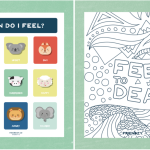Discover The Fascinating World Of Bedtime Stories TV Tropes: Unveiling The Secrets To Captivating Adventures!
Bedtime Stories TV Tropes: Exploring the Fascinating World of Storytelling
Greetings, Readers! Today, we embark on an exciting journey into the realm of bedtime stories TV tropes. Bedtime stories have long been cherished by children and adults alike, captivating our imaginations and transporting us to fantastical worlds. These tales have become an integral part of our culture, shaping our understanding of narratives and inspiring countless creative works. In this article, we will delve into the fascinating world of bedtime stories TV tropes, exploring their significance, origins, and the impact they have on our storytelling traditions. So, grab your favorite blanket and prepare to be enthralled!
Introduction
1. Bedtime Stories TV Tropes: Unveiling the Secrets of Narrative Devices
1 Picture Gallery: Discover The Fascinating World Of Bedtime Stories TV Tropes: Unveiling The Secrets To Captivating Adventures!

2. The Evolution of Bedtime Stories TV Tropes: From Oral Tradition to Modern Media

Image Source: watchthetitles.com
3. The Importance of Bedtime Stories TV Tropes in Developing Imagination and Critical Thinking
4. How Bedtime Stories TV Tropes Shape Cultural Values and Beliefs
5. Exploring the Psychological Impact of Bedtime Stories TV Tropes on Children and Adults
6. The Role of Bedtime Stories TV Tropes in Creating Memorable Characters and Plot Twists
7. Unraveling the Connection Between Bedtime Stories TV Tropes and Popular Culture
What Are Bedtime Stories TV Tropes?
Bedtime stories TV tropes refer to the recurring patterns, themes, and narrative devices commonly found in storytelling for television aimed at children before bedtime. These tropes serve as storytelling tools, allowing writers to create engaging and memorable narratives that resonate with their audience. By using familiar tropes, storytellers can tap into the universal language of storytelling, making it easier for viewers to relate to the characters and plot.
Examples of Bedtime Stories TV Tropes
1. The Hero’s Journey: This trope follows the protagonist’s transformative journey, often involving a quest, mentor, and ultimate triumph over adversity. Examples include Harry Potter and Luke Skywalker.
2. The Magical Creature Companion: Many bedtime stories feature lovable, talking animals or mythical creatures that aid the main character on their adventures. Examples include Aslan from The Chronicles of Narnia and Hagrid’s dragon Norbert from Harry Potter.
3. The Power of Friendship: This trope emphasizes the importance of friendship and teamwork in overcoming challenges. Examples include the friendships between Frodo and Sam in The Lord of the Rings and the toys in Toy Story.
4. The Villain’s Redemption: Some bedtime stories explore the redemption of a formerly evil character, highlighting the power of forgiveness and second chances. Examples include Maleficent from Sleeping Beauty and Zuko from Avatar: The Last Airbender.
5. The Moral Lesson: Bedtime stories often convey moral lessons to teach children important values. Examples include The Boy Who Cried Wolf and The Tortoise and the Hare.
Who Creates Bedtime Stories TV Tropes?
Bedtime stories TV tropes are crafted by talented writers and storytellers who understand the intricacies of captivating their young audience. These creative minds use their knowledge of storytelling techniques and child psychology to create narratives that entertain, educate, and inspire children before they drift off to sleep. From scriptwriters to authors, these individuals play a vital role in shaping the bedtime story landscape.
Scriptwriters
Scriptwriters are responsible for crafting the dialogue, plot, and overall structure of bedtime stories for television. They integrate various tropes and narrative devices to create engaging stories that resonate with their young viewers. Their expertise lies in understanding the target audience and delivering stories that are both entertaining and educational.
Authors
Authors play a crucial role in the world of bedtime stories TV tropes. They are responsible for creating the original stories that serve as the foundation for TV adaptations. These imaginative individuals bring characters and worlds to life, captivating young readers with their tales of adventure and wonder. Their ability to weave engaging narratives and incorporate relevant tropes makes their stories beloved by children worldwide.
Producers and Directors
Producers and directors oversee the production of bedtime stories TV tropes, ensuring that the vision of the scriptwriters and authors is brought to life on screen. They work closely with the creative team to ensure that the storytelling and visual elements align with the intended audience. Their expertise in storytelling and visual aesthetics contributes to the overall success of bedtime story TV adaptations.
When Did Bedtime Stories TV Tropes Originate?
The tradition of bedtime stories can be traced back to ancient times when oral storytelling was the primary medium of entertainment and education. Parents and elders would pass on tales of myth, legend, and morality to younger generations, using narratives to teach valuable life lessons and cultural values. As societies evolved, so did the medium of storytelling, from oral traditions to the written word and eventually to television.
The Rise of Bedtime Stories on Television
In the mid-20th century, with the advent of television, bedtime stories found a new platform to captivate young audiences. Shows like Captain Kangaroo and Mister Rogers’ Neighborhood introduced children to a world of storytelling through the TV screen. Bedtime stories TV tropes became a staple in children’s programming, captivating generations with their enchanting narratives and memorable characters.
Where Can You Find Bedtime Stories TV Tropes Today?
Bedtime stories TV tropes are readily available on various platforms, catering to the diverse preferences of children and their families. Television channels dedicated to children’s programming, such as Disney Channel and Cartoon Network, feature shows that incorporate bedtime story tropes. Streaming platforms like Netflix and Hulu also offer a wide selection of animated shows and movies that draw inspiration from these tropes.
Online Platforms
Online platforms have also revolutionized the way bedtime stories TV tropes are accessed and enjoyed. Websites and mobile applications offer interactive storytelling experiences, allowing children to engage with characters and explore magical worlds. These platforms often incorporate educational elements, fostering a love for learning alongside storytelling.
Books and Story Collections
Traditional bedtime stories can still be found in bookstores and libraries, providing a tangible and immersive experience for readers. Many authors have also adapted their popular stories into book series, allowing children to revisit their favorite characters and explore new adventures at their own pace.
Why Are Bedtime Stories TV Tropes Popular?
Bedtime stories TV tropes have garnered immense popularity for several reasons:
1. Nurturing Imagination and Creativity
Bedtime stories TV tropes transport children to imaginative worlds, encouraging them to think creatively and expanding their horizons. By immersing themselves in these narratives, children can develop their storytelling skills and express their own ideas.
2. Emotional Connection and Comfort
Bedtime stories TV tropes create a sense of comfort and security for children, promoting emotional well-being and bonding between parents and their little ones. These stories often feature relatable characters and themes that resonate with children, helping them navigate their own emotions.
3. Educational Value
Bedtime stories TV tropes often incorporate educational elements, teaching children about important values, problem-solving, and critical thinking. Through these narratives, children learn valuable life lessons and develop essential skills.
4. Escapism and Entertainment
Bedtime stories TV tropes provide an escape from the realities of everyday life, allowing children to immerse themselves in exciting adventures and magical worlds. These stories captivate their attention, providing a source of entertainment and joy.
5. Cultural Significance
Bedtime stories TV tropes play a significant role in shaping cultural values and beliefs. By introducing children to diverse narratives and characters, these stories promote inclusivity, empathy, and understanding of different cultures and perspectives.
Advantages and Disadvantages of Bedtime Stories TV Tropes
Advantages
1. Enhances Cognitive Development: Bedtime stories TV tropes stimulate cognitive development in children, improving their language skills, memory, and problem-solving abilities.
2. Fosters Emotional Intelligence: These stories help children understand and manage their emotions, promoting empathy and emotional intelligence.
3. Encourages Bonding and Communication: Sharing bedtime stories fosters a strong bond between parents and children, providing an opportunity for quality time and open communication.
4. Cultivates a Love for Reading: Bedtime stories TV tropes introduce children to the joy of reading, nurturing a lifelong love for books and storytelling.
5. Sparks Creativity and Imagination: These stories ignite children’s imagination, inspiring them to think creatively and explore new ideas.
Disadvantages
1. Sleep Disruption: Excessive exposure to bedtime stories TV tropes can disrupt sleep patterns, leading to difficulties in falling asleep or staying asleep.
2. Unrealistic Expectations: Some bedtime stories TV tropes may present unrealistic expectations or ideals, which can potentially impact children’s perception of reality.
3. Overreliance on Technology: With the advent of digital platforms, children may become overly dependent on screens for entertainment, potentially limiting their exposure to other forms of play and learning.
4. Cultural Stereotyping: Certain bedtime stories TV tropes may perpetuate cultural stereotypes, reinforcing biases and limiting the representation of diverse cultures and perspectives.
5. Limited Active Participation: Passive consumption of bedtime stories TV tropes may hinder children’s active participation in story creation and imagination-building activities.
Frequently Asked Questions (FAQs)
1. Are bedtime stories TV tropes only for children?
Bedtime stories TV tropes are primarily targeted at children, but they can also be enjoyed by people of all ages. The universal themes and relatable characters make these stories appealing to audiences seeking a nostalgic and enchanting narrative experience.
2. How can parents make bedtime stories TV tropes more interactive?
Parents can make bedtime stories TV tropes more interactive by encouraging children to participate in the storytelling process. They can ask open-ended questions, invite children to predict the story’s outcome, or even create their own spin-off stories based on the tropes introduced in the bedtime story.
3. Can bedtime stories TV tropes be educational?
Yes, bedtime stories TV tropes often incorporate educational elements, teaching children important values, problem-solving skills, and critical thinking. These stories can foster a love for learning while providing entertainment.
4. How can bedtime stories TV tropes promote cultural diversity?
By featuring diverse characters and narratives inspired by different cultures, bedtime stories TV tropes can promote cultural diversity and encourage children to embrace inclusivity and empathy.
5. Can watching bedtime stories TV tropes be substituted for reading?
While watching bedtime stories TV tropes can be an enjoyable and engaging experience, reading physical books or e-books offers additional benefits, such as improving language skills, visual imagination, and concentration. It is recommended to strike a balance between screen time and reading.
Conclusion: Embrace the Magic of Bedtime Stories TV Tropes
In conclusion, bedtime stories TV tropes have a profound impact on our storytelling traditions, nurturing imagination, fostering emotional intelligence, and promoting cultural diversity. Through these narratives, children and adults alike embark on captivating journeys, exploring magical worlds and timeless themes. So, the next time you gather around with your loved ones for a bedtime story, embrace the magic of TV tropes and let your imagination soar. Happy storytelling!
Final Remarks: Exploring the Endless Possibilities of Bedtime Stories TV Tropes
Friends, the world of bedtime stories TV tropes is a treasure trove of creativity, imagination, and wonder. As we conclude our exploration of this fascinating topic, let us remember the power of storytelling in shaping our lives and connecting us to one another. Whether it’s through the traditional medium of books or the modern adaptation of television, bedtime stories TV tropes continue to captivate and inspire generations. So, let us embrace these tales, share them with our loved ones, and keep the magic of storytelling alive for years to come. Sweet dreams and happy storytelling, dear readers!
This post topic: Children's Literature


